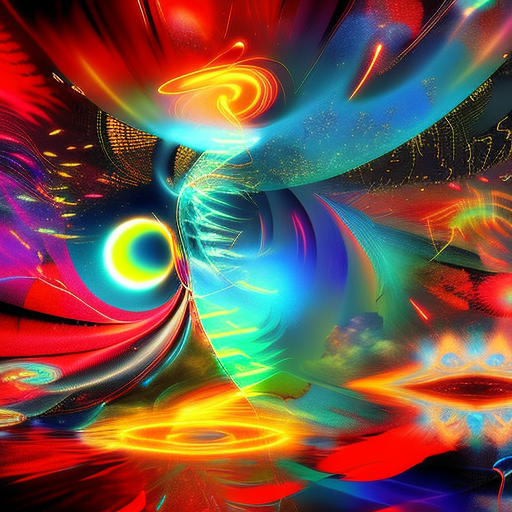One-line summary:
“Concerning the Spiritual in Art” explores the relationship between art and spirituality, emphasizing the importance of abstract and non-representational art in connecting with the inner self.
Art as a Spiritual Expression
In “Concerning the Spiritual in Art,” Wassily Kandinsky, a renowned Russian painter and art theorist, delves into the spiritual aspects of art and its transformative power. He argues that art should not merely imitate the external world but should strive to express the artist’s inner emotions and spiritual experiences. Kandinsky believes that art has the potential to transcend the physical realm and connect with the spiritual essence of humanity.
Kandinsky begins by discussing the evolution of art and its connection to the human soul. He asserts that art has always played a significant role in human history, serving as a means of communication and expression. However, he laments that art has become increasingly detached from its spiritual roots in modern times, with many artists focusing solely on the external world and neglecting the inner realm.
According to Kandinsky, the true purpose of art is to evoke emotions and spiritual experiences within the viewer. He argues that abstract and non-representational art is particularly suited for this task, as it allows the artist to bypass the limitations of the physical world and directly express their innermost thoughts and feelings. Kandinsky believes that abstract art has the power to touch the viewer’s soul, awakening dormant emotions and spiritual connections.
The Language of Color and Form
Kandinsky emphasizes the importance of color and form in conveying spiritual messages through art. He believes that each color has its own inherent spiritual qualities and can evoke specific emotions. For example, he associates blue with spirituality and calmness, while red represents passion and energy. Kandinsky also explores the significance of geometric shapes, arguing that they have symbolic meanings and can elicit different emotional responses.
To illustrate his ideas, Kandinsky provides numerous examples of his own artwork, explaining the spiritual intentions behind each piece. He encourages artists to experiment with color and form, allowing their intuition and inner guidance to guide their artistic choices. Kandinsky believes that by embracing abstraction and focusing on the spiritual aspects of art, artists can create works that resonate deeply with the viewer’s soul.
The Impact of Spiritual Art
Kandinsky concludes “Concerning the Spiritual in Art” by discussing the potential impact of spiritual art on society. He believes that art has the power to inspire and uplift humanity, fostering a deeper understanding of the spiritual dimensions of life. Kandinsky argues that through art, individuals can transcend their personal limitations and connect with a universal spiritual consciousness.
Kandinsky’s book sparked a revolution in the art world, inspiring many artists to explore abstract and non-representational forms. His ideas laid the foundation for the development of abstract expressionism and other art movements that prioritize the spiritual and emotional aspects of art.
- Art should strive to express the artist’s inner emotions and spiritual experiences.
- Abstract and non-representational art has the power to touch the viewer’s soul.
- Color and form play a crucial role in conveying spiritual messages through art.
- Art has the potential to inspire and uplift humanity, fostering a deeper understanding of spirituality.
“The artist must train not only his eye but also his soul.” – Wassily Kandinsky
In “Concerning the Spiritual in Art,” Kandinsky invites artists and viewers alike to explore the spiritual dimensions of art. He encourages artists to tap into their inner selves and express their emotions and experiences through abstract forms and vibrant colors. By doing so, Kandinsky believes that art can transcend the physical and connect with the spiritual, inspiring a deeper understanding of ourselves and the world around us.












